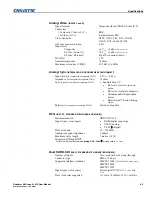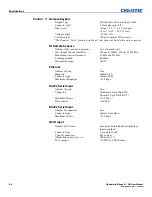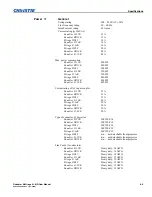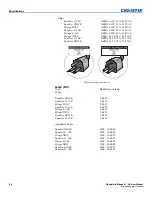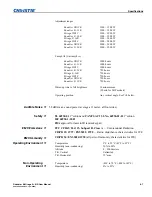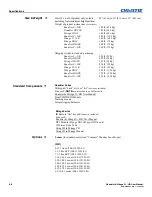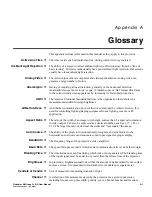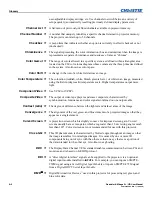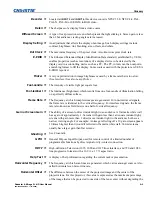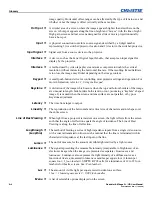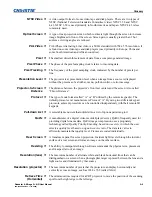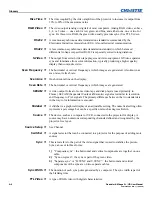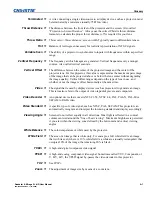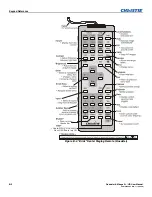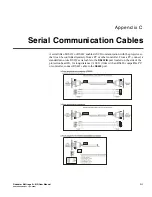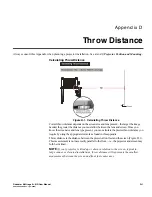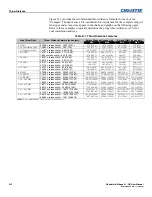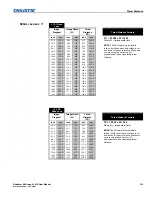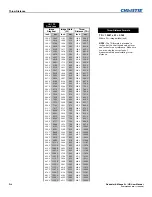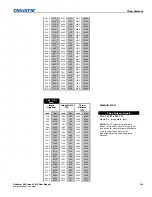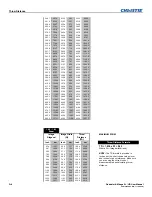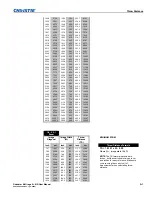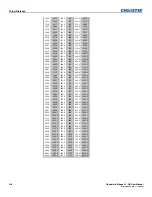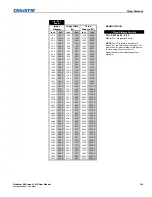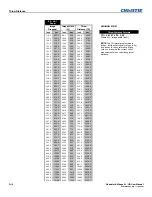
Glossary
Roadster & Mirage S+/HD User Manual
A-7
020-100002-04 Rev. 1 (12-2008)
A wire connecting a single video source to a display device, such as a projector, must
be terminated by a resistance (usually 75
S
for video).
The distance between the front feet of the projector and the screen. Also called
“Projector-to-Screen Distance”. Always use the correct Christie throw distance
formula to calculate the proper throw distance (±5%) required for your lens.
Throw ratio = throw distance / screen width. Typically used to differentiate lenses.
Balance of red-to-green necessary for realistic representation of NTSC signals.
The ability of a projector to synchronize to inputs with frequencies within a specified
range.
The frequency at which images are generated. Vertical frequencies vary amongst
sources. Also called vertical scan rate.
The difference between the center of the projected image and the center of the
projector lens. For this projector, this value is expressed as the maximum percentage
of the image that can be projected above or below the lens center without degrading
the image quality. Vertical offset ranges depend on the type of lens in use, and
whether or not the image is offset horizontally at the same time.
The signal that is used by display devices (such as projectors) to generate an image.
This term also refers to the output of video tape/disk players and computers.
An optional device that converts NTSC 3.58, NTSC 4.4, PAL, PAL-N, PAL-M or
SECAM to RGB video.
A specific type of video signal, such as NTSC, PAL, SECAM. This projector can
automatically recognize and interpret the incoming standard and display accordingly.
Screens do not reflect equally in all directions. Most light is reflected in a conical
volume centered around the “line of best viewing”. Maximum brightness is perceived
if you are within the viewing cone defined by the horizontal and vertical viewing
angles.
The color temperature of white used by the projector.
The area of an image that is white only. For example, a full white field is an image
that is white everywhere. A 10% white field is a white area (usually rectangular) that
occupies 10% of the image; the remaining 90% is black.
A high-end
digital
component video signal.
A high-end
analog
component video signal. Sometimes called YUV, Component, or
Y, R-Y, B-Y, the YPbPr signal by-passes the video decoder in this projector.
See
YPbPr
.
The adjustment of image size by means of a zoom lens.
Terminated
Throw
Distance
Throw
Ratio
Tint
Variable
Scan
Vertical
Frequency
Vertical
Offset
Video
Video
Decoder
Video
Standard
Viewing Angle
White
Balance
White
Field
YCbCr
YPbPr
YUV
Zoom

